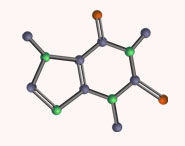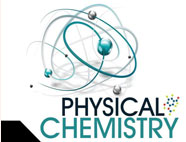


 علم الكيمياء
علم الكيمياء 
 الكيمياء التحليلية
الكيمياء التحليلية 
 الكيمياء الحياتية
الكيمياء الحياتية 
 الكيمياء العضوية
الكيمياء العضوية 
 الكيمياء الفيزيائية
الكيمياء الفيزيائية
 الكيمياء اللاعضوية
الكيمياء اللاعضوية 
 مواضيع اخرى في الكيمياء
مواضيع اخرى في الكيمياء
 الكيمياء الصناعية
الكيمياء الصناعية |
Read More
Date: 27-8-2019
Date: 11-9-2019
Date: 21-11-2019
|
Recall the definitions of electrophile and nucleophile:
Electrophile: An electron deficient atom, ion or molecule that has an affinity for an electron pair, and will bond to a base or nucleophile.
Nucleophile: An atom, ion or molecule that has an electron pair that may be donated in forming a covalent bond to an electrophile (or Lewis acid).
If we use a common alkyl halide, such as methyl bromide, and a common solvent, ethanol, we can examine the rate at which various nucleophiles substitute the methyl carbon. Nucleophilicity is thereby related to the relative rate of substitution reactions at the halogen-bearing carbon atom of the reference alkyl halide. The most reactive nucleophiles are said to be more nucleophilic than less reactive members of the group. The nucleophilicities of some common Nu:(–) reactants vary as shown in the following
Nucleophilicity: CH3CO2(–) < Cl(–) < Br(–) < N3(–) < CH3O(–) < CN(–) ≈ SCN(–) < I(–) < CH3S(–)

The reactivity range encompassed by these reagents is over 5,000 fold, thiolate being the most reactive. Note that by using methyl bromide as the reference substrate, the complication of competing elimination reactions is avoided. The nucleophiles used in this study were all anions, but this is not a necessary requirement for these substitution reactions. Indeed reactions 6 & 7, presented at the beginning of this section, are examples of neutral nucleophiles participating in substitution reactions. The cumulative results of studies of this kind has led to useful empirical rules pertaining to nucleophilicity:
(i) For a given element, negatively charged species are more nucleophilic (and basic) than are equivalent neutral species.
(ii) For a given period of the periodic table, nucleophilicity (and basicity) decreases on moving from left to right.
(iii) For a given group of the periodic table, nucleophilicity increases from top to bottom (i.e. with increasing size), although there is a solvent dependence due to hydrogen bonding. Basicity varies in the opposite manner.



|
|
|
|
دخلت غرفة فنسيت ماذا تريد من داخلها.. خبير يفسر الحالة
|
|
|
|
|
|
|
ثورة طبية.. ابتكار أصغر جهاز لتنظيم ضربات القلب في العالم
|
|
|
|
|
|
|
قسم الشؤون الخدمية ينفذ حملة لصيانة عربات الزائرين من ذوي الاحتياجات الخاصة
|
|
|